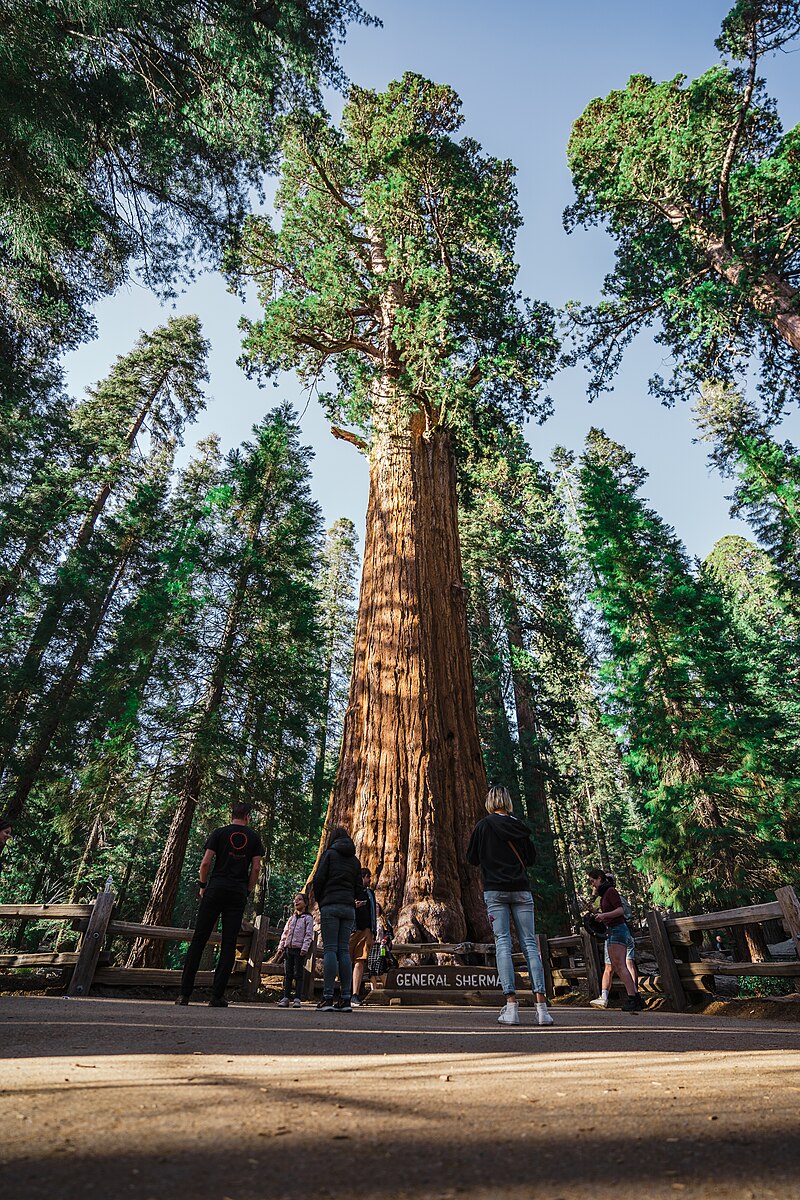Sequoia National Park
WEIGHT: 2.7 million pounds
There are taller trees, and wider trees, but the General Sherman Tree contains more wood (volume) in its trunk than any other tree on Earth. Behind the Sherman Tree are the General Grant, President, Lincoln, and Stagg trees. Another measure of tree volume is the total biomass of the tree-trunk, branches, roots, and foliage. If we measure the biomass, the Sherman Tree still ranks at #1, but the General Grant Tree loses second place to the President Tree.
How old is this tree?
For a long time it was thought that this tree had reached an age of 2000 to 3000 years. Others even spoke about ages of 6000 to 11000 years. Research from 2002 has shown that he is probably ‘only’ about 2000 years old. In the past sequoias have been cut down that appeared to be 3220 years old (by counting the tree rings) and it is assumed that there might be giant sequoias up to 4000 years old out there, because the biggest are not always the oldest ones.
Sequoia roots are shallow but spread wide. They entangle with the roots of other sequoias, forming a kind of mesh that helps all the trees maintain balance and stability.
Tree volume calculation
The General Sherman Tree is not the tallest tree in the world, nor the thickest at the base, but get its title “biggest tree in the world” from its total wood volume, or, more precisely, its total trunk volume.
The official number mentioned on the info panel near the tree is 52500 cubic feet, or, in decimal units, 1487 m³ based on a number of girth measurements mentioned on the info panel: 31.3 m circumference near the ground, 5.3 m diameter at 60 ft.
As you walk among sequoias, watch for Douglas squirrels, also called chickarees. They climb into sequoias and chew through the stems of cones. If you come across a tree that seems to drop a cone every few seconds, you know that a Douglas squirrel is cutting cones for dinner. They then eat the green, fleshy covering of the cones; look for chewed-up cones on the ground. They also store cones and dried mushrooms high in pines or sequoias.
The Congress Trail starts near the Sherman Tree, and provides a tour of some of the most spectacular sequoias of Giant Forest. This easy three-mile loop also connects to other trails that can take you throughout Giant Forest (be sure to take a map).
In 1879, General Sherman Tree was named after the American Civil War general William Tecumseh Sherman, by naturalist James Wolverton, who had served as a lieutenant in the 9th Indiana Cavalry under Sherman. In 1931, following comparisons with the nearby General Grant tree, General Sherman was identified as the largest tree in the world. One result of this process was that wood volume became widely accepted as the standard for establishing and comparing the size of different trees.
In 1903, the Buffalo Soldiers protected these parks. Their leader, then-Captain Charles Young, was one of the first superintendents of these parks and the first African-American superintendent of any national park. He developed plans to protect the legacy of the giant sequoia groves, oversaw the building of the first roads into the parks, and protected both parks from illegal logging, grazing, and poaching.
Services and Parking
The main parking area and trailhead for the General Sherman Tree is located just off Wolverton Road. The parking area is one of the main shuttle stops in the parks. Shuttles stop here every 15 to 20 minutes.
Parking for people with disabilities is located on the Generals Highway 2 miles from the Giant Forest Museum and 3 miles from the Lodgepole Visitor Center.
The parking area provides restrooms, trash cans, water, and food-storage lockers.
Make sure that you store all food is stored in these lockers-bears can be active in this parking lot.
The General Sherman Tree is about a half mile from the parking lot. Be prepared for an uphill climb when return from your hike. In summer, you can avoid the uphill hike by walking from the Sherman Tree down to the accessible parking lot and shuttle stop along the Generals Highway. From there, take the Orange Route back to the main General Sherman Tree parking area.
Accessibility
Accessible parking is located on the Generals Highway 2 miles from the Giant Forest Museum and 3 miles from the Lodgepole Visitor Center. The parking area provides restrooms, trash cans, and water. An easy path leads to the General Sherman Tree from the trailhead. This wheelchair-accessible paved path is accessible by wheelchairs, strollers, and walkers. The trail is about 500 feet in length and is gently sloped.
In summer, the free park shuttle leads to the General Sherman Tree accessible parking area.
